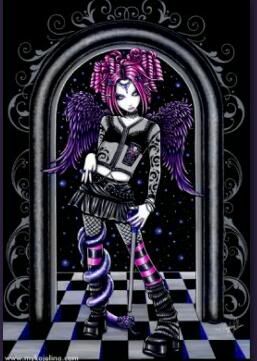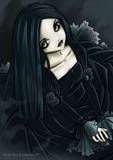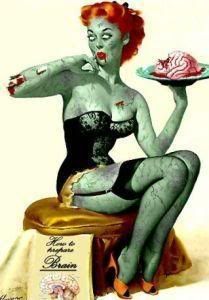The White Lady of Stow Lake
In my new novel, Saving Grace Devine, a young girl is drowned, but her spirit returns to haunt the lakeside where she met her untimely end. She seeks help from the living, to help her cross over to the afterlife.
From my research, it would appear that my fictional Grace is not alone. Many people have reported seeing ghosts of drowned girls and young women, who are apparently bound to the shores of the lake where they died. They all appear to be searching for something, or someone -in dire need of help from the living to help them join the world of spirit.
And not all of them are benign.
One such wraith seems to constitute a deadly reason why I, for one, would think twice before venturing on a walk around Stow Lake in San Francisco’s Golden Gate Park. Her appearances have been frequent and well documented.
Golden Gate Park is landscaped on similar lines to New York’s Central Park. It hosts a museum, Japanese Tea Gardens, the Conservatory of Flowers, Sprekels Park and, of course, Stow Lake. It also houses a number of ghosts – and even an allegedly moving statue. But more of that later. We’re concerned now with “a thin, tall figure in white.” So said Arthur Pigeon, as reported in the San Francisco Chronicle of January 6th 1908. Police had pulled him over for speeding and he told the newspaper that it had blocked his way as he drove out of the park, “…it seemed to shine. It had long, fair hair and was barefooted. I did not notice the face. I was too frightened and anxious to get away from the place.”
Of course, the temptation is to say the man was merely trying to avoid getting a speeding ticket. And if his had been the only report, then that could well have been the case. But it wasn’t. Over the hundred plus years since that Chronicle article, many other people have reported seeing precisely the same apparition.
So who is this mysterious ‘white lady’ of Stow Lake?
There are, as always, a number of theories. One of the more compelling is that in the late 1800s, a young woman was out, walking her baby in its pram around the lake. She became tired and sat down on a bench. Presently another lady came to join her and the two struck up a conversation. So engrossed was the young mother that she failed to notice the pram rolling away. Suddenly she realized it had gone. There was no sign of either the pram or the baby. Panic stricken, she searched high and low, asking everyone, “Have you seen my baby?” No one had. For the rest of that day, and into the night, she searched.
Finally, she realized the baby and the pram must have fallen into the lake. She jumped in and was never seen alive again.
Witnesses who report seeing her speak of a woman in a dirty white dress, sometimes soaking wet and, contrary to Arthur Pigeon’s assertion that she had fair hair, the other reports consistently state she has long, dark hair. Sometimes she is also seen on Strawberry Hill – adjacent to the lake. Her face wears an anxious expression and she has been known to approach people walking around the lake at night. She asks, “Have you seen my baby?”
As for the statue I mentioned earlier, this is called ‘Pioneer Woman and Children’. It has a reputation for moving around – and even changing shape. These phenomena always occur at night and seem directly linked to the white lady. Sometimes the statue’s face changes. Other times, it has no legs or head. Motorists have reported electrical issues. Different cars driving near the statue or lake at the same time have stalled simultaneously.
Finally, if you are brave – or foolhardy – enough, try going down to Stow Lake at night and say, “White lady, white lady, I have your baby” three times. It is said she will then manifest herself before you and ask you, “Have you seen my baby?” If you say, “yes”, she will haunt you ever after. But, if you say, “no”, she’ll kill you.
Now there’s no documented evidence of the white lady committing murder. But are you prepared to put her to the test?
Here’s a flavour of Saving Grace Devine:
Can the living help the dead…and at what cost?
When Alex Fletcher finds a painting of a drowned girl, she’s unnerved. When the girl in the painting opens her eyes, she is terrified. And when the girl appears to her as an apparition and begs her for help, Alex can’t refuse.
But as she digs further into Grace’s past, she is embroiled in supernatural forces she cannot control, and a timeslip back to 1912 brings her face to face with the man who killed Grace and the demonic spirit of his long-dead mother. With such nightmarish forces stacked against her, Alex’s options are few. Somehow she must save Grace, but to do so, she must pay an unimaginable price.
Now, here’s an excerpt:
My footsteps echoed as I trod the creaky polished floorboards in the empty room. I couldn’t overcome the feeling of being watched. For the second time since I had arrived on Arnsay, goosebumps rose along my arms and the little hairs on the back of my neck stood up. Don’t be ridiculous, I told myself, your imagination’s got the better of you again.
I shook my head and made for the nearest glass cabinet. Above it, a portrait of the museum’s benefactor—Jonas Devine—gazed out at the world. I studied his face for a minute. His dark hair, flecked with gray, receded at the temples. He had a kind expression, clear brown eyes and a neatly trimmed moustache in the style of the late Victorians. My attention returned to his eyes. The artist had captured an ethereal, faraway look in them as if his subject could see something beyond what had been in the room. He was dressed in a dark suit of the period and one hand rested on his thigh, while the other held a book. I peered closer but couldn’t see any title. Maybe it was a small Bible or perhaps a novel by his favorite writer.
I switched my gaze down to the contents of the cabinet. A pair of wire-rimmed spectacles, gloves, a pen and inkstand, all personal items from the man’s study. I moved on and came across an information board nailed to the wall. It seemed Jonas Devine had bought the house when he brought his new bride Margarita—a former music hall artist—to settle on this remote island. This had followed some unspecified need of hers to leave Edinburgh, where she worked, and where she first met Jonas. A photograph showed a dark-eyed woman dressed in Spanish style, complete with mantilla and fan. I could imagine her dancing Flamenco, flashing brown legs as she laughed and flirted with every man she saw.
Another photo showed a slightly older Margarita with a little boy of around two—her son, Adrian. Her eyes no longer flashed and the Latin flamboyance had given way to a demure dress, well suited to a young Victorian mother. But I read defiance in her expression. I bet she could be a handful, I thought.
I read on. Margarita had died soon after giving birth to her second son, Robert, leaving Jonas with two young boys. In 1897, he had acquired a governess—Agnes Morrison—a widow with a young daughter. They were married soon after. There was one photograph of her, with Jonas’s two sons, but no sign of her daughter. I did learn one thing about her though. Her name was Grace and she took Jonas’s surname on her mother’s marriage. Grace Devine.
An icy breeze chilled me, and I hugged myself. I had the strongest feeling of someone standing right by my shoulder, but I had heard no one come up the stairs. I braced myself, took a deep breath and whirled around, relieved to see I was still alone. But then another sound drifted towards me. A sigh. Again I told myself to stop imagining things and carried on wandering around the rooms.
Jonas Devine had certainly been an avid collector. Stamps, coins, butterflies, all cataloged in meticulous detail and laid out for inspection. I supposed there wasn’t much else to do if you were independently wealthy and lived on a remote Scottish island in the late nineteenth century.
One room was devoted to his collection of stuffed birds and animals, all presented in glass cases, in an approximation of their real habitat. Goodness alone knew where he had displayed all these things when he was alive. I found them hideous and macabre, but then I’ve never been a fan of taxidermy.
Below each case was a chest of shallow drawers. I opened one and found a collection of cameos. Much more my taste, and he had some lovely ones too. Some were carved onto coral, others onto tortoiseshell, some on ebony and some ivory. Some were the traditional profile, but most were far more intricate, and I pulled out drawer after drawer of them, all laid out under glass. The collection must have numbered hundreds, maybe thousands, and as for their value…
In the second chest, one drawer stuck halfway and wouldn’t budge, and I could tell something was wedged inside.
I reached in and poked around until I found the culprit. A material that felt like canvas was firmly stuck there. I pushed at it but it wouldn’t shift, so I wiggled it around and tried to grab hold of it. Eventually it gave and I pulled out something that looked like a rolled up painting.
I unrolled it and revealed a strange picture. The bizarre subject was painted in blue-green hues, and represented either a lake or the sea, from underwater. In the foreground a girl floated. Her eyes were closed and I guessed she was around fourteen or fifteen years old. She was dressed in a white gown, decorated with a pattern of tiny flowers. Her feet were shod in black Victorian, buttoned-up boots and the gown billowed up from her ankles, exposing white stockings. Her hands floated next to her and her light brown hair flowed loose around her. With a pang, I realized the artist hadn’t depicted a living subject. This girl had drowned.
It could almost have been a photograph, and I had the strongest urge to touch the girl and stroke her hair, but my fingers found the unmistakable texture of oil paint.
The goosebumps arose for the third time but I ignored them, riveted by the loving attention to detail in the artist’s tragic subject. Who would paint such a picture? I searched around for a signature but couldn’t find one.
I don’t know how long I stared. The painting troubled, repelled and fascinated me all in one go. Finally, I decided to take it down to Duncan. He could find a more suitable home for it. Then, as I started to roll it up, the girl’s eyes opened.
You can find Saving Grace Devine in all usual ebook formats here:
and in paperback here:
About the author
Catherine Cavendish is joint winner of the Samhain Gothic Horror Anthology competition 2013. Her winning novella – Linden Manor – is now available in all digital formats and the print anthology will be published in October. She is the author of a number of paranormal horror and Gothic horror novellas and short stories. Her novel, Saving Grace Devine, has just been published by Samhain Publishing.
She lives with a longsuffering husband in North Wales. Her home is in a building dating back to the mid-18th century which is haunted by a friendly ghost, who announces her presence by footsteps, switching lights on and strange phenomena involving the washing machine and the TV.
When not slaving over a hot computer, Cat enjoys wandering around Neolithic stone circles and visiting old haunted houses.
You can connect with Cat here:
www.catherinecavendish.com
https://www.facebook.com/CatherineCavendishWriter?ref=hl
http://www.goodreads.com/author/show/4961171.Catherine_Cavendish






















































